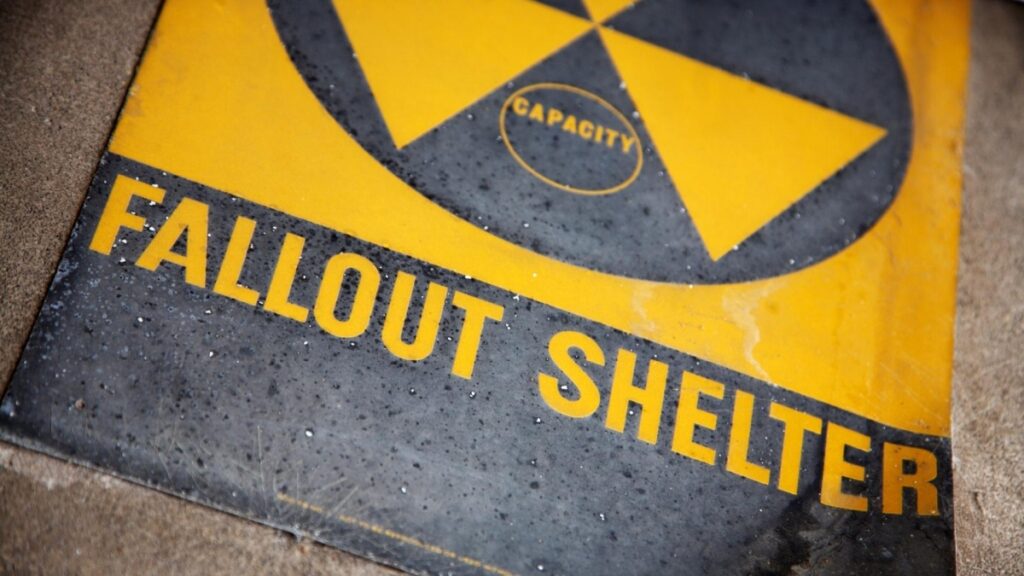
Recent international political developments have brought to the table a topic long forgotten: that of a possible nuclear attack and all the consequences that come with it. Searches for “nuclear fallout shelter near me” have increased with this nuclear saber rattling.
While most military forces in the world have a ‘no attacking first’ policies in place for the use of nuclear weapons, the topic of a possible nuclear attack and the subsequent fallout have sprung back to life. With this in mind, let’s consider what you can do to find a fallout shelter near you.
A nuclear fallout, or nuclear snow, is the debris that gets sucked up into the nuclear mushroom and irradiated. This radioactive waste then falls down to the ground and poses significant health risks to all that make any kind of contact with it. The biggest particles fall straight down, close to the impact site.
The smaller particles, on the other hand, can travel hundreds of miles and irradiate areas larger than a state. As the particles are radioactive and toxic to most animal and plant life, you should not make any contact with them. This is hard enough to do, as the particles may form a thin dust-like coating on everything in the vicinity.
Note that if you are seriously concerned about the probably of facing nuclear fallout, it’s worth investing in some Potassium Iodide pills. Preppers stock it and you should, too.
- Made In The USA this potassium iodide compound comes from India, with final manufacturing in the United States. Our facility adheres to the FDA requirements and guidelines with good manufacturing...
- Best Thyroid Protection Treatment In An Emergency
- Quick obsorb
Needless to say, these particles can also penetrate homes, business and residential buildings and cause havoc to all inside. For this reason, it is necessary to locate and head to the nearest fallout shelter as soon as possible.
Private Fallout Shelters
The rich are building bunkers to survive a global catastrophe. This was true during the Cold War and it’s true today. I toured one such underground mansion while in Las Vegas. You can watch my video of the bunker.
Most of us don’t have the financial backing to build our own bunker, however. That means we need improvised shelters or we have to make use of public fallout shelters should the need arise.
What Is a Public Fallout Shelter?
These fallout shelters are usually found underground or within the concrete core of old buildings. They offer protection against most radiation and radioactive particles and are a much safer bet than staying outside during the nuclear snow or fallout. As they are dispersed throughout the USA and can house 50 million people, it is very likely there is a nuclear fallout shelter within walking distance from your home.
It goes without saying that you should be aware of the closest fallout shelter before a nuclear disaster strikes. Similarly to safety instructions given before every flight, staying safe is better than being sorry for not spending minutes to seek for a fallout shelter beforehand. As there is only 10-15 minutes between the initial detonation of a nuclear bomb or a hydrogen bomb and the fallout, reacting quickly and knowing your drill is essential in saving lives.
In case of a nuclear emergency, you will most probably be heading to a public fallout shelter. These buildings were almost never built with this specific purpose. Rather, they are the special parts of existing buildings that offer strong protection from both penetrating radiation (gamma rays) and radioactive particles or debris.
They are usually found underground, such as in underground garages, old mine shafts and basements. Alternatively, they can be found at higher floors of high-rise concrete and steel buildings, where the concrete core of the building itself blocks most of the radiation.
Types of Fallout Shelters
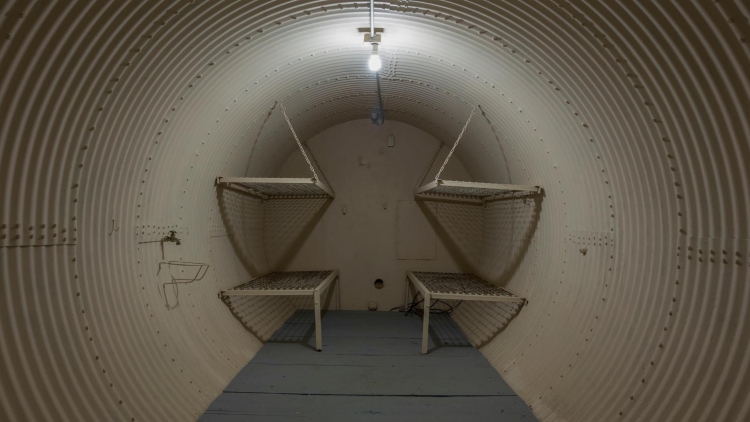
As they come in many shapes and sizes, most public (and private) fallout shelters provide some form of protection within the limited space. In most cases, you will get 10 square feet of standing space per person in ventilated fallout shelters, or as much as 500 square feet per person in unventilated fallout shelters. In any case, public fallout shelters have been designed to provide most protection to hundreds, if not even thousands of people at once.
Limits, such as how much air there is in the shelter, the air exchange rate for that particular building, how much food and water can be safely stored and how large the surface area is dictate how many people can be safely sheltering themselves in here. Going over the limits can provide less security to all, not just the extra few, and running out of supplies before the air is clear is a sure-way to starvation. In an environment where sanitation is considered a luxury, following these strict rules is a must. Let’s consider some basic fallout shelter types:
Old Mine Shafts
Throughout the US, there are thousands of abandoned mine shafts. Even before a nuclear disaster strikes, you should visit the nearest mine. Beware that mines are dangerous and should only be used as a last resort. Many of these shafts have been permanently sealed shut and that they may be completely inaccessible.
Pay a visit to one only if there is no other form of public fallout shelter and if your house does not have a basement. Visiting the mine shaft beforehand will let you learn about its accessibility – and safety, as spiders, snakes, bats and bears may abound within.
Basements and Crawl Spaces
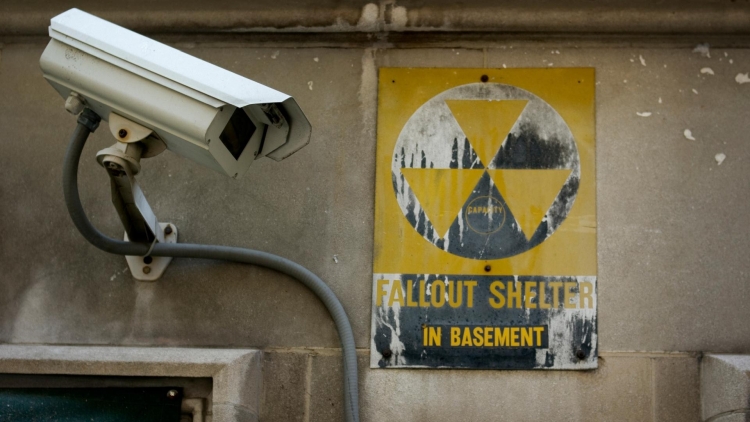
Although mine shafts can be deep and provide the best possible Protection Factor, they are also dangerous places. Besides the obvious animal and pest issues, they may also be full of toxic gasses and fumes and the danger of them caving in is always present. For this reason, you may choose to use your home basement for this purpose.
Basements are usually at least partly underground. This means that you can enjoy the benefits of natural radiation protection, while at the same time being at home, with good access to the outside. Basements with thick walls are always better than thin-wall basements, so you may decide to level up your protection by stacking up sand-filled bags and building additional overhead support made from bricks and plywood.
Needless to say, basements with windows offer less protection than basements with no windows. If your basement has windows, placing several sand bags over each window or simply mounting up earth on top of windows is the best way to block off the harmful radiation.
Keeping the windows and doors closed is a must, as even small crevices may offer a way for radioactive particles to get inside. Just think of how much effort is needed to seal shut an entire home, as a part of weatherization.
Underground Parking Garages
If you live in a residential building, the basement is still the best option for you. However, as not all high-rise buildings have basements, you may want to use their underground garages. These places offer plenty of space for many temporary occupants, are deep underground and are made of super-thick walls of concrete. If there is a way to shut off the entryway, all the better.
Subway
The subway network of tunnels spans miles under any city that has a subway. As most multi-million cities in the US have their own subways, there is plenty of space to hide here. This does not mean that you should jump on track and start running whichever way. Simply being on the platform means that you are several feet away from the surface.
Another reason not to jump on the rails is that they may still be electrified and that there may be cars running their lines unaware of what may be happening on the surface. Only access the lines if instructed so by police or military personnel. There may be more damage than good in doing otherwise from instructed.
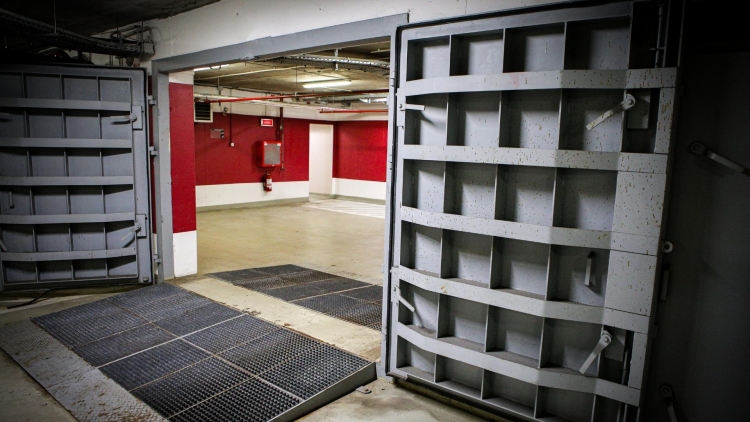
Federal Fallout Shelters
In case you cannot find appropriate shelter, your best bet are various federal fallout shelters dispersed throughout the country. They are all marked with a specific symbol and can usually be found in public buildings, such as schools, hospitals and public libraries. When in doubt, during an emergency, contact 911 and seek help.
Federal fallout shelters are your best and your safest option as they are most likely to be quickly equipped with food and water. They may also provide access to restrooms and may have a power supply even in the case of a power outage. In any case, you should also be aware that mob mentality and small-scale civil unrest may break out, especially as people covered in radioactive ashes may enter these buildings long after you.
Mass Care Shelters
Mass care shelters, on the other hand, may not be specifically designated areas for those who would like to seek shelter. These buildings are made of concrete, have thick walls and few, if any, windows. These buildings include shopping malls, fire department and police stations, as well as casinos. Always check the ability to enter and ensure safety for both yourself and others.
What to Know About a Government Fallout Shelter Near You
With this many different options, knowing which one is the best can be difficult. All these shelters provide a certain level of protection in the case of a nuclear attack and resulting fallout. To bet informed about what government fallout shelters there are in your area, you should visit either of the two sources: Ready.gov or Civil Defense Museum – National Fallout Shelter Program.
Are They Supplied?
Most government shelters are not supplied, as keeping supplies ready and stocked can be quite costly – consider that most shelters have been designated decades ago. Storing and keeping fresh decades’ worth of food would cost billions and would result in millions of tons of waste every year. However, they are likely to be quickly supplied in cases of emergencies and disasters.
Where Are the Cold War Bunkers?
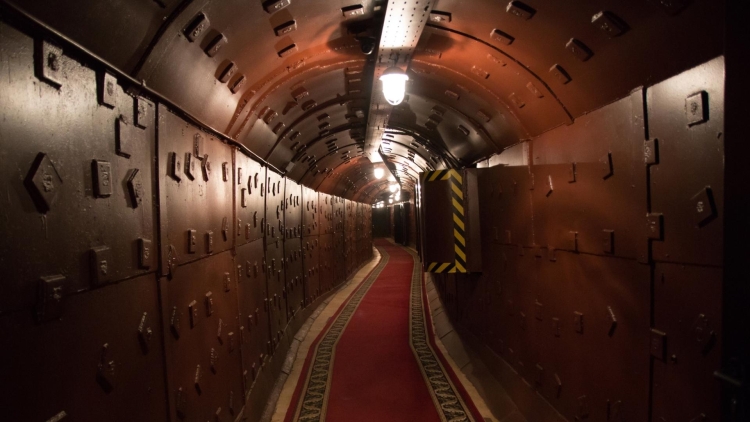
Beware that a Cold War bunker is not the same as a fallout shelter. Bunkers were supposed to provide long-term hideout spots throughout the world and the US. Fallout shelters, on the other hand, are there as a temporary means of staying away from the fallout. Consider that fallout degrades fast – up to 80% of it should self-degrade within the first 24 hours. Bunkers were supposed to provide shelter for weeks or even months.
I did tour a homemade concrete fallout shelter from the Cold War era, though it was more of a dank, musty room than anything else (see the pics here).
DIY Improvised Fallout Shelters
As not every area and every house has a fallout shelter, you may have to improvise. In any case, you should know that a fallout shelter, in most cases, will not be strong enough to withstand the direct nuclear blast, but will keep you secure and alive during the fallout and its degradation.
To improvise a fallout shelter, you should place any firm object between you and the direction the nuclear explosion took place in. This will offer some protection from the fallout. Always remember that the thicker and denser the material, the stronger the protection it will provide you with.
We have supplied many different free fallout shelter designs that you can use at your home. Some common materials used in building a fallout shelter include:
- Timber and other types of wood (very little protection),
- Earth piled up over some form of support – the thicker the better,
- Bricks – good protection,
- Sandbags – good protection, can also be used as flooding protection, serving two purposes,
- Concrete – actual concrete (at least 6-8 inches thick) is the best form of protection against nuclear fallout, especially if underground.
The better the protection your fallout shelter provides you with, the costlier it gets. You can experiment with different fallout designs and sizes and see what works for you. In most cases, you will be able to protect both you and your family by converting an underground laundry room or even your sturdy-material garage into a temporary hiding spot.
If, on the other hand, you would like to build your own designated fallout shelter, you should consider that the best time to do so is while building your home. This will give you an opportunity to have a fallout shelter with an exit to the outside, and to configure the space in such a way that you have enough space for all your supplies, as well as a power source.
There are ways to make this construction easier. In addition to the free designs linked to above, you can also make underground bunkers from septic tanks or from large culverts.
Sturdy, concrete or brick walls will also mean there is a stronger protection than shelters added to the building later on. Alternatively, you can look for shelters that can be dug into your backyard, or even reconfigure your existing basement space so it (or a part of it) serves as a fallout shelter. In any case, any form of a shelter is better than no fallout shelter.
When to Enter a Fallout Shelter

You should enter your fallout shelter on the shortest possible notice of an imminent attack. In most cases, local authorities will provide you with clear instructions and a warning if there is immediate nuclear threat. If you have an in-home fallout shelter, use the time wisely and bring in the essentials. If you are heading to a remote fallout shelter, always be prepared in advance and waste no time.
Being quick is of essence in going to a nuclear fallout shelter. As many people may try to access the same shelter at once, roads can get blocked and you may need to walk on foot. For this reason, bring only the essentials and leave any non-essentials in the home. Ensure you pack:
- Food supply for several days (3-5 days’ worth should be enough),
- Water supply – a gallon per day per person, but you can carry less, as you will be taking limited amounts of it,
- Cleaning products, including toilet paper and wet wipes – bear in mind that you may not have access to running water in the fallout shelter,
- Medicine – all of it, as even in the case that fallout shelters are equipped with food and water, your medicine may not be supplied,
- Clothes – only the basics, one change and possibly a rain-proof jacket, especially in the summertime. Shelters are often underground and can get very cold,
- A radio and spare batteries – it is essential to establish communication with local authorities as soon as possible. Never leave the shelter before being cleared by authorities.
How Long Does Nuclear Fallout Last?
A nuclear fallout generally lasts for around 24 hours. Normally, the closer you are to the detonation site, the longer you may have to stay inside, as the radioactive material will be deposited more thickly and will take more time to decompose. You can expect that:
- 55% of the nuclear fallout will degrade/decompose over the first hour,
- 80% of the nuclear fallout will degrade/decompose over the first 24 hours,
- Traces of radioactive waste will be present in the environment for weeks and possibly even months.
As time is of essence, you should plan to get to the fallout shelter as soon as possible. Fallout occurs 10-15 minutes after the nuclear blast. Plan to stay in a shelter for several days, although this may not be needed. It is always better to be safe than sorry, so ensure safety and supplies for both you and your family.

Life Inside a Shelter – Not Easy
Even if you have to stay in the fallout shelter for a few short days, you should know that it will not be an easy experience. Crammed in with many other people, with around 10 square feet of floor space per person is not enough. No access to basic sanitation and running water, dry food and limited water intake can all be expected.
One of the most dangerous aspects of any shelter of this kind is the lack of basic sanitation. No restrooms and no running water pose health hazard issues and may result in a medical emergency.
For this reason, staying cold-hearted and stable is essential: improvised toilets can be made from buckets and you may need to use plastic bags to tie the contents in. Use the same plastic bags to dispose of toilet paper and wet wipes.
Staying together and being mindful of others and their needs is essential. Make sure that once the shelter is full and the fallout has initiated, any newcomers have a separate space for themselves. This may mean sending newcomers (who may take in traces of fallout ashes on them) to a separate room or keeping them at a safe distance. This may not always be possible. In any case, plan for the worst and act the best you can.
Summary and Further Reading
A nuclear fallout is a highly unlikely scenario. However, considering how many tense political areas there are in the world and how close we got to World War III outbreak several times in the past decade, it may be useful to revise the strategies and check out the nearest fallout shelter. Use this handy guide to secure your and your family’s needs are met in the case of a nuclear emergency.
If you want to read more about how to survival a nuclear exchange, see Cresson Kearny’s Nuclear War Survival Skills.
- Kearny, Cresson H (Author)
- English (Publication Language)
- 340 Pages - 04/29/2022 (Publication Date) - Knowledge Publications Corporation (Publisher)


